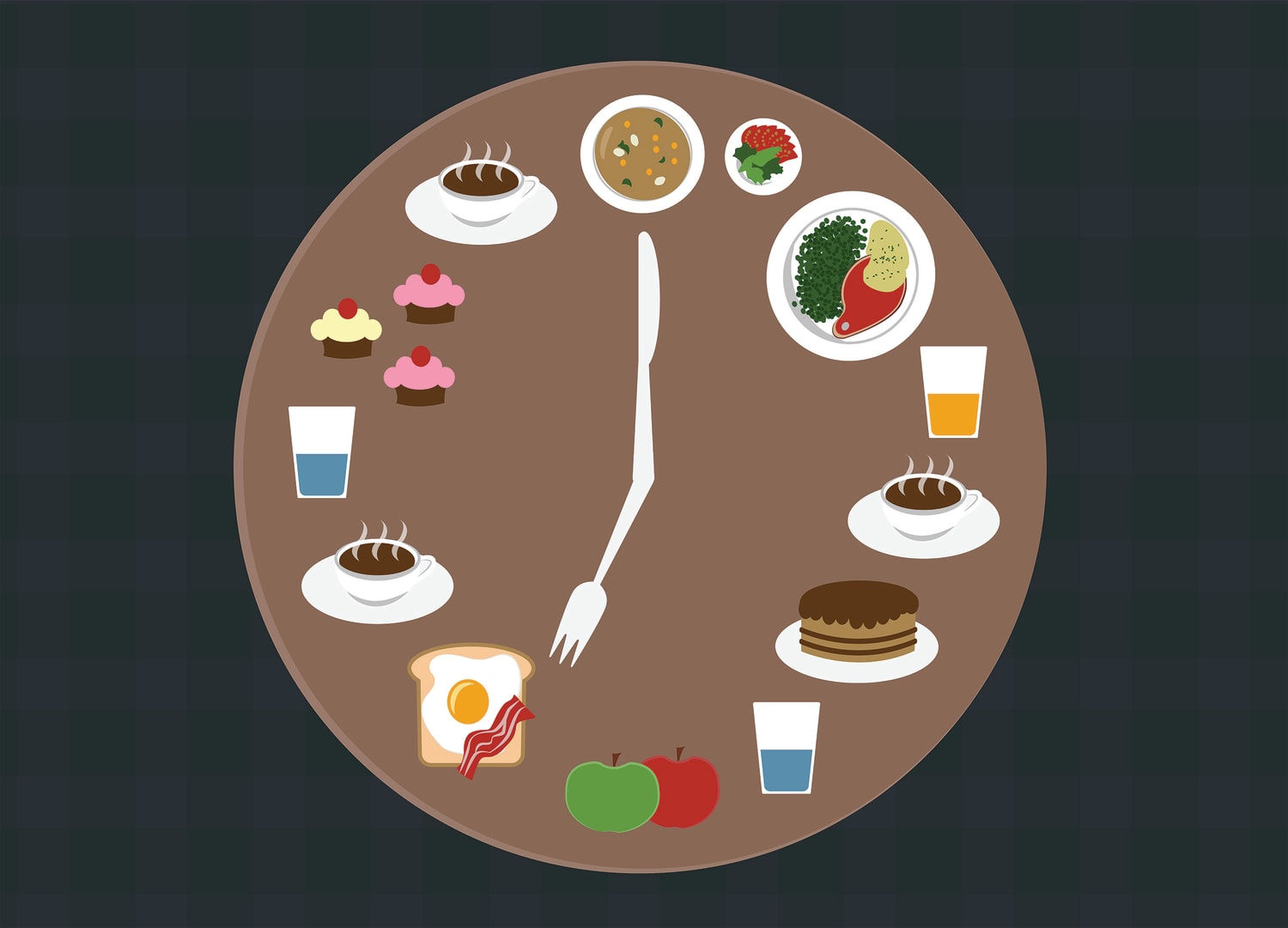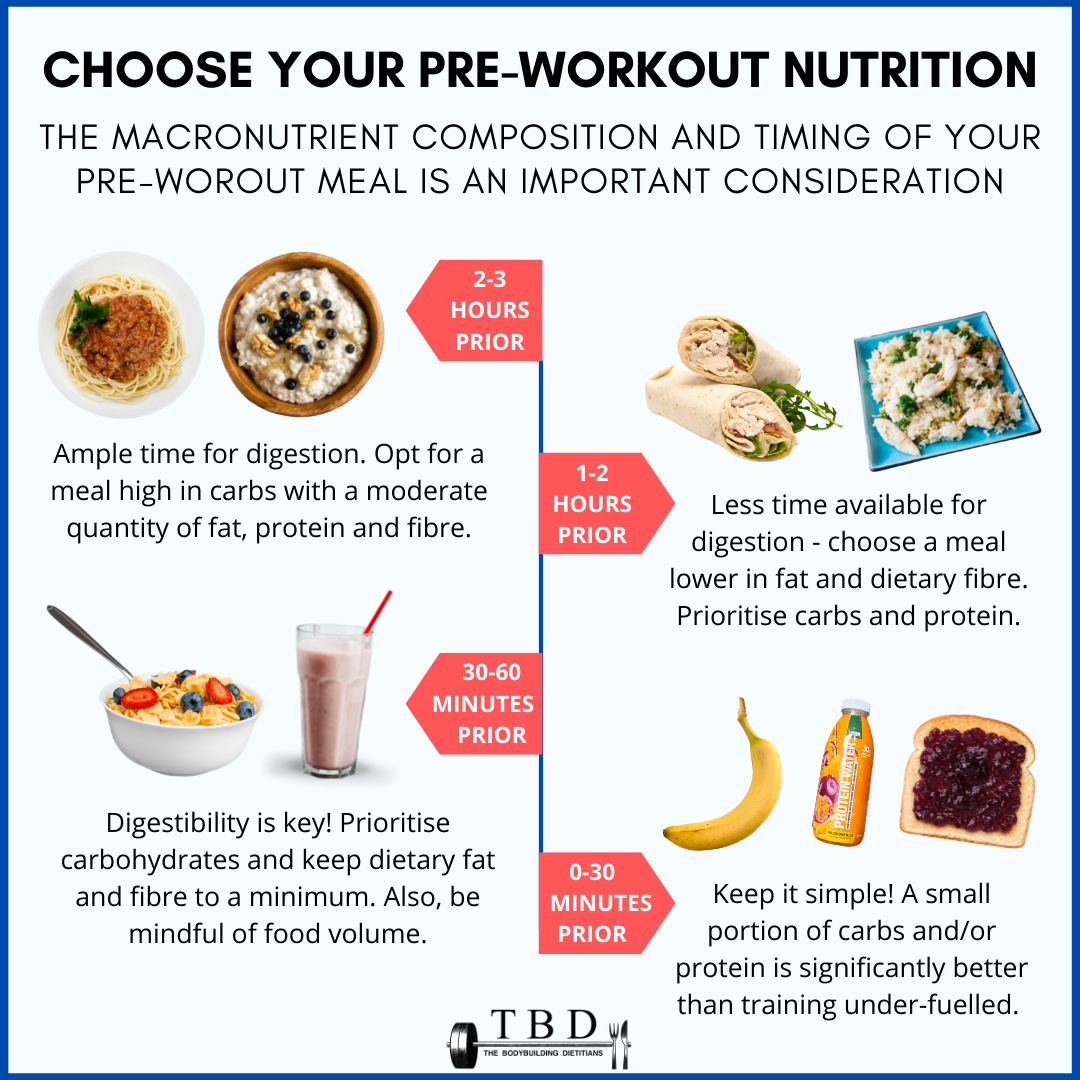Unlocking the Secrets of Micro-Macronutrient Timing Around Workouts
Discover how the science of nutrient timing can transform your workout routine and recovery. This article dives into the strategic consumption of micro and macronutrients pre-, during, and post-exercise to boost performance and improve health. With a nod to the Workout Notepad app, we portray how tracking your nutrition along with your exercise regime could revolutionize your fitness journey.
WN
By Workout Notepad
December 09, 2023

The Clock is Ticking: An Introduction to Nutrient Timing

workout food clock
As the old adage says, timing is everything, and nowhere does this ring truer than in the intricate dance of fueling the body for the athletic performance. Nutrient timing is an advanced nutritional concept that takes the spotlight in guiding athletes and fitness enthusiasts towards the zenith of their physical endeavors. By syncing food intake with our body’s exercise cycle, proponents argue that we stand at the edge of unlocking enhanced muscle growth, better sports performance, and a leaner physique. This guide promises to explore the tantalizing possibilities that lie within adjusting our eating habits ever so slightly—a whisper in timing that might roar in results. Still, the mosaic of research surrounding nutrient timing comes with pieces both supportive and skeptic, hinting that beyond the clock hands of ingestion moments, the overall macronutrient quality and daily consistency might play equally pivotal roles.
As we prepare to embark on this exploration of pre-, during, and post-workout nutrition, we keep in mind that each body is a unique canvas, the brush strokes of its nourishment composed of both rigorous science and individual quirks. The impending sections will demystify what makes for an optimal pre-workout meal that not only fuels the body but potentially elevates training to new highs. As technology weaves itself into the fabric of fitness, digital tools like Workout Notepad can play a supportive role, offering timely reminders for nutrient intake—transforming the art of nutrient timing into a science of precision that seamlessly integrates into the daily life of an athlete.
Fueling the Engine: Pre-Workout Nutrition Essentials

pre-workout meal
Fueling the Engine: Pre-Workout Nutrition Essentials
Understanding the right balance of micro and macronutrients before a workout is tantamount to priming your body’s energy systems for the exertion to come. Carbohydrates are your muscle’s preferred source of quick energy, particularly valuable for short, high-intensity workouts. These carbs fuel your body’s glycogen stores, which it taps into during this type of exercise. On the flip side, fats are key for fueling longer, moderate-to-low intensity workouts. They provide a more sustained release of energy that is ideal for endurance activities. Equally as critical, proteins consumed before exercise aid in preempting muscle protein synthesis, which anticipates the recovery and muscle-building processes.
Hydration is the unsung hero of pre-workout nutrition—vital for maintaining exercise performance and preventing the adverse effects of dehydration. Supplements can also play a role, whether it’s creatine for muscular endurance, caffeine for an alertness boost, or branched-chain amino acids for muscle recovery. While such enhancements have their place, it’s the macronutrients combined with strategic hydration that truly lay the foundation for a successful workout. The ideal timing for pre-workout meals is a complete meal 2-3 hours before training, which provides sufficient time for digestion and nutrient absorption. For athletes on the go, strategically timed notifications, such as those from the Workout Notepad app, can ensure they don’t miss this optimal window and maximize their performance and recovery.
In the Heat of the Moment: During-Workout Nutrition Tips
During intense workouts, maintaining an adequate supply of energy to fuel your muscles is pivotal for performance and endurance. In accordance with the American College of Sports Medicine, it’s recommended to have easily digestible carbohydrates during your workouts to sustain blood glucose levels. What makes for such optimal during-workout fuel? Simple carbohydrates such as isotonic drinks that contain glucose, fructose, or a similar quick-release sugar are ideal. These can be easily assimilated into the bloodstream, providing a rapid energy supply to exercising muscles. Additionally, minimal protein intake can help combat muscle catabolism without causing digestive distress. It’s best to avoid fiber-rich fruits and vegetables or fat-heavy foods during exercise as these can be harder to digest and may cause gastric discomfort. Importantly, it’s vital to prioritize hydration, taking into account personal sweat rates and environmental conditions to tailor fluid intake for effective hydration.
Furthermore, to effectively maintain and optimize during-workout nutrition, it’s beneficial to keep close tabs on your intake and how it correlates with performance. This is where tools like the Workout Notepad app can become incredibly valuable. By documenting your nutritional intake and hydration levels in conjunction with your exercise regimen, you can have a clear adjust track of what works best for your performance. Over time, logging these details creates a personalized database, which can inform future nutrient timing and choices, ensuring you provide your body with exactly what it needs during grueling training sessions. As the impact of nutrition does not stop when you leave the gym, the next section will delve into post-workout nutrition dynamics that are critical for proper recovery and muscle synthesis. Recording these nutritional strategies immediately post-exercise can offer insights into recovery rates and the effectiveness of different foods and supplements, setting the stage for a meticulous approach that can lead to substantial improvements in fitness and well-being.
Post-Workout Windows: Maximizing Muscle and Recovery
The synchronization of nutrient intake with exercise is debated among experts, yet the post-workout window remains a focal point for those looking to optimize recovery and muscle gains. The act of strategically consuming proteins and carbohydrates immediately after exercise is based on the premise that this timing may facilitate better muscle anabolism, though the studies provide mixed results. Current evidence pans from no significant impact on body composition to notable enhancements in muscle cross-sectional area, weaving a complex narrative around this aspect of nutrient timing. But, beyond the raw data, the application of such dietary strategies should be tailored to the individual, accounting for the variability in response to nutrient timing and the type of exercise performed. Practical application demands real-world utility, implying that the efficacy of post-exercise nutrient intake could well depend on the consistency and precision with which it’s executed.
What marks the difference in capturing the full potential of post-exercise nutrition could be the meticulous tracking and analysis of one’s dietary and exercise patterns. Logging immediate consumption and exercise details can provide valuable insights into the actual impact of nutrient timing on muscle recovery and growth. An app like Workout Notepad, with features tailored to document nutrient intake, could be pivotal for individuals striving for optimized results. Attaching imagery or detailed notes to logged activities helps in deepening the understanding of personal physiological responses. Although the advertisement for Workout Notepad doesn’t indicate a direct feature for nutrition logging, athletes could leverage such technology to correlate their nutritional habits with changes in performance over time, gradually redefining their post-workout choices for more consistent and favorable outcomes.
Are You Timing It Right? Personalizing Your Nutrient Clock
Are You Timing It Right? Personalizing Your Nutrient Clock
Nutrient timing is not a one-size-fits-all guide; rather, it needs to be tailored according to individual lifestyle, fitness objectives, and body responses. For some, a robust pre-workout meal may lead to Gastrointestinal discomfort during a run, while others may find that their performance thrives under such nutrition. Similarly, post-exercise, different bodies have varying thresholds for nutrient absorption. This is where the role of personalized nutrition-timing strategy comes into play. Given the unique nature of our lifestyles and fitness goals—from endurance athletes requiring a steady inflow of carbs to bulkers reliant on protein and structured meal patterns—it’s vital to configure one’s own nutrient clock. While the complexity of individualizing such a regimen may seem daunting, technology offers a seamless solution. Tracking apps like Workout Notepad become an invaluable ally in this personalization. By analyzing intake patterns and workout history, these digital tools enable the fine-tuning of meal timing to one’s specific needs—spotting what maximizes performance and speeds up recovery for each person.
In the broader spectrum of fitness, it’s important to be conscious of common pitfalls that many encounter with nutrient timing. The next section will delve into these nutritional faux pas and their potential to derail workout benefits. Paying attention to these pitfalls help in crafting an effective nutrient timing strategy. For instance, a preemptive discussion on mistakes such as skipping the essential post-workout meal, or misunderstanding nutrient proportions can shift the limelight on the importance of methodical planning assisted by technological tools like the Workout Notepad app. This integration of personalized data not only helps in realizing your body’s optimal fueling times but also steers clear of generic advice that might not suit everyone’s unique nutritional requirements.
When the Timing’s Off: Common Pitfalls to Avoid
As athletes and fitness enthusiasts strive to optimize their performance and recovery through nutrient timing, certain common missteps can undercut their efforts. One such mistake is the incorrect allocation of carbohydrate intake, where individuals might avoid carbs before their workout to ‘save’ them for later, but this can impede performance as the body requires readily available fuel for energy. Misjudging the timing of nutrient intake can result in suboptimal glycogen replenishment, negatively impacting recovery and growth. Additionally, the preoccupation with the mythologized ‘anabolic window’ can lead to a rushed consumption of nutrients post-workout, when in reality, the body’s ability to synthesize protein and restore muscle glycogen extends beyond this narrow timeframe. Another frequent error is overvaluing nutrient timing over the fundamentals of a balanced diet, which can actually hinder long-term fitness goals. Recognizing these pitfalls, some choose to incorporate tech tools such as Workout Notepad to monitor and plan their nutrition timing meticulously, helping them make the most out of their workouts by tracking their macronutrient consumption in relation to their exercise schedule.
While high-level athletes may indeed find an edge in meticulously timed nutrition strategies, most people should primarily attend to their overall diet quality. The excessive focus on perfecting nutrient timing can detract from the basic principles of healthy eating, adequate macro and micronutrient intake, and consistency in dietary habits. It’s essential to ensure that the bulk of one’s diet is comprised of fiber-rich carbohydrates, lean proteins, and healthy fats rather than obsessing over meal timing. Technology solutions like the Workout Notepad app can aid in achieving this balance by helping users maintain an overarching perspective on their nutritional habits, while also fine-tuning their intake to coincide with exercise and activity levels.
The Big Picture: Harmonizing Workout and Nutrition
Understanding the complexity of coordinating nutrition with exercise regimens highlights the pivotal role of holistic health approaches. What we ingest is the fuel that powers our exertions and an overall nutritious diet is foundational to any fitness goal. However, it’s not just about the ‘what’ but also the ‘when.’ The precision of nutrient timing—be it carbohydrate loading before a marathon or a protein-carb blend post resistance training—works cogently to enhance performance and accelerate recovery, embodying a symphony of strategic nutrient deployment tailored to workout demands. The synchronization of nutrition with exercise pivots on the axis of this orchestrated timing to affect exercise response, the optimization of which could visibly amplify the fruits of one’s labor in the gym or on the field.
Emerging as a valuable tool in harmonizing these complex variables, tech solutions appear to be a beacon for many fitness enthusiasts. Although not essential, these technologies have the potential to facilitate adherence to nutrient timing guidelines, prevent common timing missteps, and streamline the process of aligning dietary patterns with workout schedules. The Workout Notepad app, for example, could potentially complement this disciplined regimen by offering a means to track and optimize meal and workout timings, thus integrating itself into the user’s holistic health strategy. The forthcoming section details just how this app might serve as a keystone in the arch of fitness and nutrition, rehearsing a narrative where technology meets personal health science and fortifies the crux of performance and recovery.
Your New Workout Ally: Meet the Workout Notepad App
Your New Workout Ally: Meet the Workout Notepad App
Adopting nutrient timing as a part of your health regimen is more than just a theory; it’s about integrating those moments that count with the workouts that challenge you. Imagine, then, the advantage of a high-quality tool that seamlessly aligns your nutrition timing with your exercise routine – that’s precisely what the Workout Notepad app aims to offer. Building on the foundation of commonly appreciated principles of health and fitness, the app condenses various tracking necessities into a singular, accessible platform. With an intuitive interface praised by early access users, the Workout planning experience is streamlined – you can monitor not only the range, time, and intensity of your workouts but also align your meals, supplements, and hydration accordingly.
Further enriching this alignment, the Workout Notepad app’s expansive library of exercises covers both cardio and strength training, ensuring detailed tracking regardless of your regimen. Apple Watch compatibility also means that real-time data is always at hand – literally. By seeing when and what to eat right next to your workout schedule and results, users are better equipped to adhere to those critical pre- and post-workout windows, thereby maximizing muscle gains and recovery. With acclaim for its flexibility and advanced statistics feature, the app stands as a testimony to how tech can enhance our commitment to healthier, more informed lifestyle choices. By incorporating the easy scheduling and note-taking features, you can finally bid farewell to the chaotic spreadsheets and embrace a more organized path to achieve your fitness goals.
SOURCES
- https://blog.nasm.org/workout-and-nutrition-timing
- https://www.precisionnutrition.com/all-about-nutrient-timing
- https://hips.hearstapps.com/hmg-prod/images/gettyimages-1344852933.jpg?crop=0.670xw:1.00xh;0,0&resize=1200:*
- https://www.healthline.com/nutrition/does-nutrient-timing-matter
- https://www.ncbi.nlm.nih.gov/pmc/articles/PMC7400240/
- https://media-cldnry.s-nbcnews.com/image/upload/newscms/2018_36/2559076/180907-stock-clock-plate-al-1655.jpg
- https://www.healthline.com/nutrition/eat-before-workout
- https://www.inmotionoc.com/should-you-eat-before-working-out/
- https://images.squarespace-cdn.com/content/v1/5d59f351fddabe00013cf3e6/9d48584f-c1a5-414e-addf-403aa6a2d21f/PRE-WORKOUT+NUTRITION.png
- https://www.heart.org/en/healthy-living/healthy-eating/eat-smart/nutrition-basics/food-as-fuel-before-during-and-after-workouts
- https://www.verywellfit.com/eating-and-drinking-during-exercise-5224736
- https://www.ncbi.nlm.nih.gov/pmc/articles/PMC3577439/
- https://www.issaonline.com/blog/post/nutrient-timing-for-bigger-muscles
- https://www.workingagainstgravity.com/articles/nutrition-timing-based-on-your-workout-schedule
- https://www.macrostax.com/tips/nutrient-timing-what-to-know-and-how-to-optimize-your-results/
- https://www.precisionnutrition.com/all-about-nutrient-timing
- https://www.healthline.com/nutrition/does-nutrient-timing-matter
- https://www.ncbi.nlm.nih.gov/pmc/articles/PMC5596471/
- https://www.precisionnutrition.com/all-about-nutrient-timing
- https://apps.apple.com/us/app/strong-workout-tracker-gym-log/id464254577
- https://apps.apple.com/us/app/fitlist-gym-workout-log/id696350076
